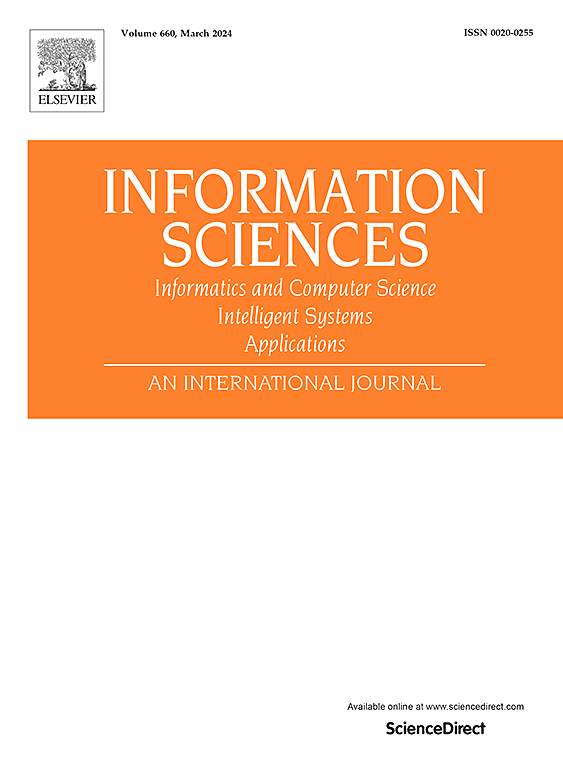Refined Kolmogorov complexity of analog, evolving and stochastic recurrent neural networks
IF 8.1
1区 计算机科学
0 COMPUTER SCIENCE, INFORMATION SYSTEMS
引用次数: 0
Abstract
Kolmogorov complexity measures the compressibility of real numbers. We provide a refined characterization of the hypercomputational power of analog, evolving, and stochastic neural networks based on the Kolmogorov complexity of their real weights, evolving weights, and real probabilities, respectively. First, we retrieve the infinite hierarchy of complexity classes of analog networks, defined in terms of the Kolmogorov complexity of their real weights. This hierarchy lies between the complexity classes P and . Next, using a natural identification between real numbers and infinite sequences of bits, we generalize this result to evolving networks, obtaining a similar hierarchy of complexity classes within the same bounds. Finally, we extend these results to stochastic networks that employ real probabilities as randomness, deriving a new infinite hierarchy of complexity classes situated between BPP and . Beyond providing examples of such hierarchies, we describe a generic method for constructing them based on classes of functions of increasing complexity. As a practical application, we show that the predictive capabilities of recurrent neural networks are strongly impacted by the quantization applied to their weights. Overall, these results highlight the relationship between the computational power of neural networks and the intrinsic information contained by their parameters.
模拟、进化和随机递归神经网络的改进Kolmogorov复杂度
Kolmogorov复杂度测量实数的可压缩性。我们基于模拟、演化和随机神经网络的真实权重、演化权重和真实概率的Kolmogorov复杂度,对模拟、演化和随机神经网络的超计算能力进行了精细的描述。首先,我们检索模拟网络的复杂性类的无限层次结构,根据其实际权重的Kolmogorov复杂度定义。这个层次结构位于复杂度类P和P/poly之间。接下来,使用实数和无限位序列之间的自然识别,我们将这一结果推广到进化网络,在相同的边界内获得类似的复杂度类层次结构。最后,我们将这些结果扩展到使用实概率作为随机性的随机网络,推导出位于BPP和BPP/log之间的复杂度类的新的无限层次结构。除了提供这种层次结构的示例之外,我们还描述了一种基于日益复杂的函数类构建它们的通用方法。作为一个实际应用,我们表明递归神经网络的预测能力受到权重量化的强烈影响。总的来说,这些结果突出了神经网络的计算能力与其参数所包含的内在信息之间的关系。
本文章由计算机程序翻译,如有差异,请以英文原文为准。
求助全文
约1分钟内获得全文
求助全文
来源期刊

Information Sciences
工程技术-计算机:信息系统
CiteScore
14.00
自引率
17.30%
发文量
1322
审稿时长
10.4 months
期刊介绍:
Informatics and Computer Science Intelligent Systems Applications is an esteemed international journal that focuses on publishing original and creative research findings in the field of information sciences. We also feature a limited number of timely tutorial and surveying contributions.
Our journal aims to cater to a diverse audience, including researchers, developers, managers, strategic planners, graduate students, and anyone interested in staying up-to-date with cutting-edge research in information science, knowledge engineering, and intelligent systems. While readers are expected to share a common interest in information science, they come from varying backgrounds such as engineering, mathematics, statistics, physics, computer science, cell biology, molecular biology, management science, cognitive science, neurobiology, behavioral sciences, and biochemistry.
 求助内容:
求助内容: 应助结果提醒方式:
应助结果提醒方式:


